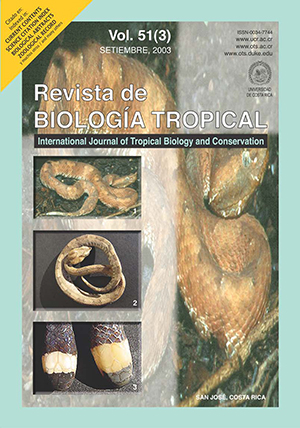Abstract
A polymorphic population of Phaseolus vulgaris var. aborigineus growing at the Northwest of Argentina was studied. In order to know the origin of this polymorphism, some plants belonging to the var. aborigineus, other plants showing floral dimorphism and other individuals with particular characters were collected. Their seeds, obtained after field-work treatments of autogamy and free pollination, were sown in a greenhouse, isolated of the access of pollinators. The growth of each plant was followed until its fructification, and the number of plants that died due to infections was recorded. The number of plants that flowered and fructified was registered in order to study their reproductive success. The floral, fruit and seed qualitative and quantitative characters were documented. With the results obtained, the authors concluded that those individuals that showed floral dimorphism are probably a result of hybridization and introgression between the var. aborigineus and “old cultivars”. This hypothesis is supported by the presence of divergent segregation, observed in the offspring of the plants with this segregation. Other crops should allow the genic flow between the parental entities, with the consequence of the establishment of an hybrid population coexistent with their ancestors. Perhaps, as a result of introgression, the stabilized lines exhibit characters different from their parental varieties. The results of autopollination and free pollination in those individuals assigned to var. aborigineus, showed that free pollination brings a great genetic plasticity, because next generations can persist and resist infections. The offspring of the F1 was followed. The plants that belonged to var. aborigineus, product of free pollination, exhibited fast growth and were healthy, while the descendant of the individuals with the floral dimorphism showed characteristics that allowed to conclude the possible existence of degeneration of the hybrid progeny; this characteristics were: curled radicles with cotyledons that never emerge, plantule’s apex that soon die with the following development of branches from the cotyledon’s axil, and death after some weeks. This degeneration indicates that an unwanted gene flow in the area could lead to a decline in the wild bean population. The vigor, high reproductive success and resistance to illnesses of the individuals corresponding to the var. vulgaris, whose progenitor was treated for free fecundation, and the offspring of the plants with cultivated characteristics, are indicative of the necessity of preserving this germplasm to evaluate its agronomic potential to brief term. The DNA analyses already initiated, will allow the confirmation of the hypotheses outlined in this work.##plugins.facebook.comentarios##

This work is licensed under a Creative Commons Attribution 4.0 International License.
Copyright (c) 2003 Revista de Biología Tropical
Downloads
Download data is not yet available.


